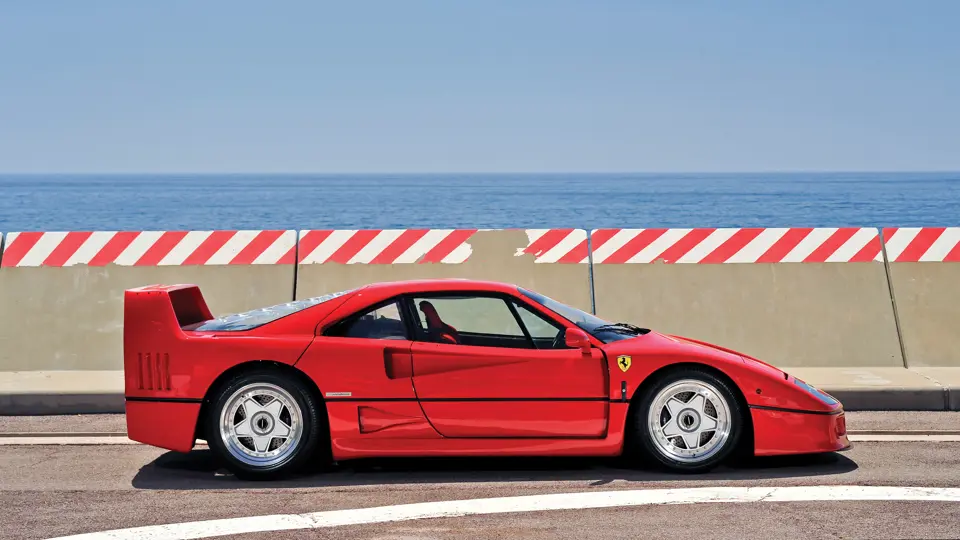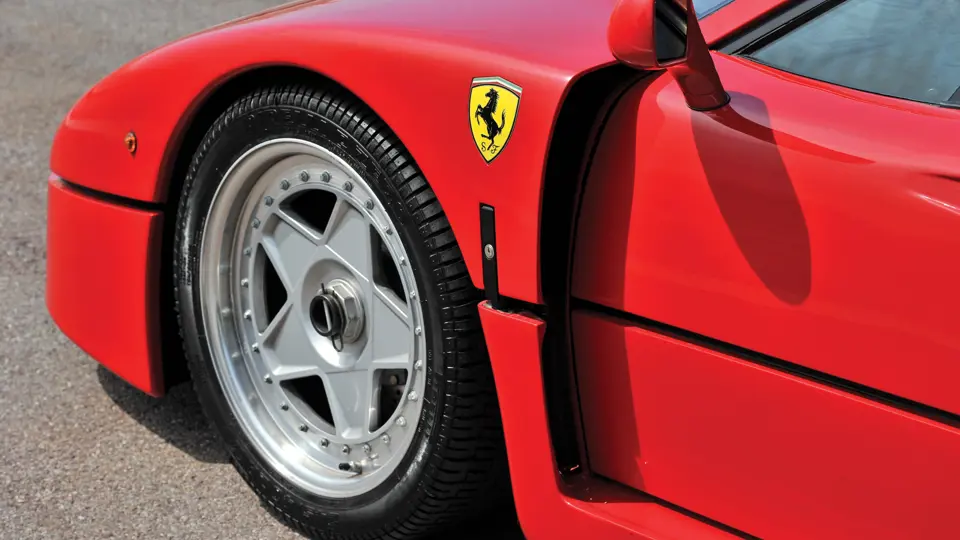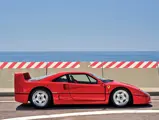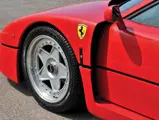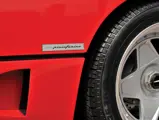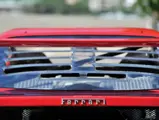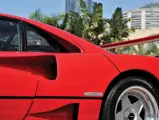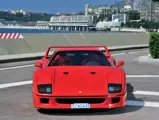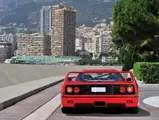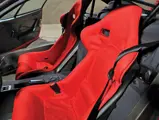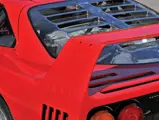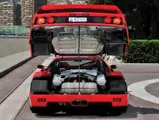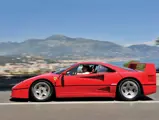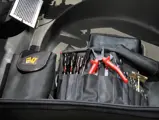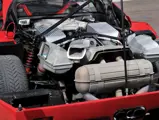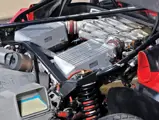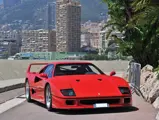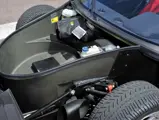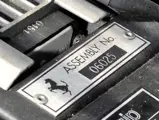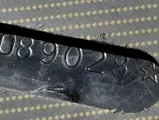478 bhp, 2,936 cc DOHC 90-degree V-8 engine with two turbochargers and Weber-Marelli engine management and fuel injection, five-speed manual transmission, tubular steel and carbon composite chassis, independent double-wishbone suspension with Koni hydraulic shock absorbers and front and rear anti-roll bars, and four-wheel steel ventilated disc brakes. Wheelbase: 2,450 mm
Named in celebration of the company’s 40th birthday, the Ferrari F40 was the storied marque’s entry into a raging supercar war in the late 1980s. With the Lamborghini Countach as the poster-child for a generation and Porsche’s 959 pioneering technology never before seen in the automotive industry, Enzo Ferrari was not willing to let his rivals have all the attention. Setting the 959’s top speed of 197 mph firmly in its sights, Ferrari decided that it would take that record back. The F40 rocketed to a top speed of 201.4 mph, making it the first production car ever to break the 200 mph barrier.
Ferrari, however, focused on a different approach than Porsche. Rather than pursue the development of innovative new technologies, Ferrari turned to its Formula 1 team for inspiration and stuck with the tried-and-true method of “less is more”, making the F40 as lightweight as possible. As a result, the F40 pioneered the use of carbon fibre for its chassis and bodywork, tipping the scales at a svelte 2,400 pounds. Its masterful bodywork was designed with aerodynamics in mind and could provide excellent high-speed stability as well as plenty of airflow to the engine to prevent it from overheating. The interior made no compromises in the relentless pursuit of performance, either. Fitted with lightweight bucket seats and stripped out for racing, the car could be outfitted with roll-up or fixed windows, had no carpets, and even featured door pulls instead of traditional handles.
To make the most of the lightweight construction, the car would need an equally potent engine, and at the F40’s heart was its engine: a twin-turbocharged DOHC V-8 based on that of the 288 GTO. With bigger bores and a shorter stroke, the longitudinally mounted four-cam, with twin IHI turbochargers, was a screamer of an engine and produced a monstrous 478 horsepower. A sprint from 0–60 could take just 3.8 seconds, and the car could rocket itself to a quarter-mile in 11.8 seconds. Braking was equally impressive, and the F40 could go from 60 mph to a grinding halt in just 119 feet.
Originally intended for a limited production of around 400 units, Ferrari quickly realized that demand for the F40 was much stronger than it had anticipated, and 1,311 examples were built in total. Every F40 would leave the factory in Rosso Corsa paintwork and left-hand drive configuration. In 1987, its list price was roughly $400,000, but many traded hands for much more than that at the time. It became the most profitable car in Ferrari history and in all respects, was a very fitting gift on the occasion of the company’s 40th anniversary.
Fitted with catalytic converters and non-adjustable suspension, this F40 was sold to its first owner in March 1991 via Crepaldi in Milan, Italy, and is one of the very best examples to become available in recent memory. Offered from single ownership with just under 5,700 kilometres showing on its odometer, it presents virtually as new throughout. The car has received a recent full, engine-out service by Monaco Motors which included replacing both the timing belts and the fuel tanks. Seeking to maintain the car’s supreme originality, the original owner has even kept the car’s original tyres fitted. It should, however, be noted that these should be replaced before the car is driven at length. Furthermore, the car is accompanied by its original tool kit and owner’s manuals, and it has been certified by Ferrari Classiche and retains all of its original mechanical components.
Unfortunately, with Enzo’s death on 14 August 1988, the F40 was the last car to receive the blessing of “Il Commendatore” before his passing, signalling the end of an era for one of the most iconic marques in automotive history. Almost 30 years after its creation, the F40 still remains an automotive icon and can still provide plenty of high-speed thrills, even compared to today’s crop of modern supercars. An F40 is often considered to be one of the most visceral experiences one can have on four wheels, and it is surely not a car for the faint of heart; however, it is the perfect automobile for someone who wants to experience one of the greatest analogue supercars ever produced.
Simply stated, this F40 checks all the right boxes. Having remained in single ownership from new, with limited original mileage and a recent, engine-out belt service and fuel tank replacement by Modena Motors and Ferrari Classiche certification to its name, it presents exceptionally well throughout and would be a worthy addition to even the finest Ferrari collections.




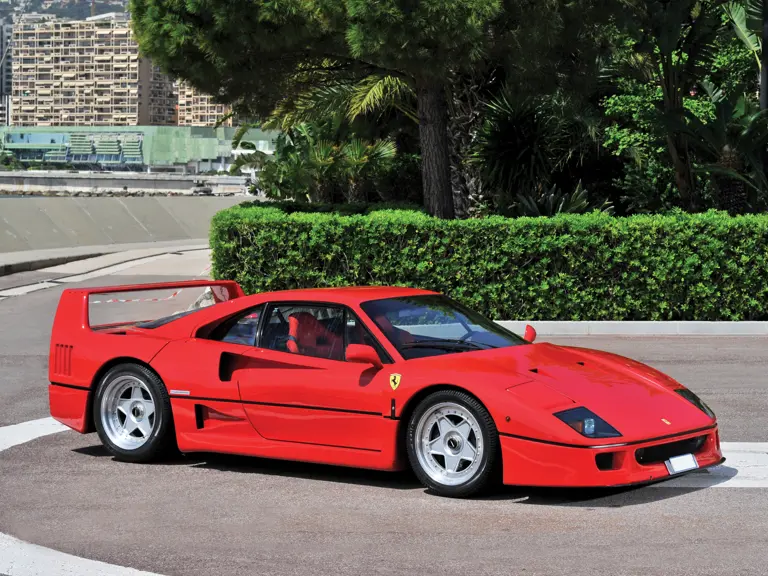
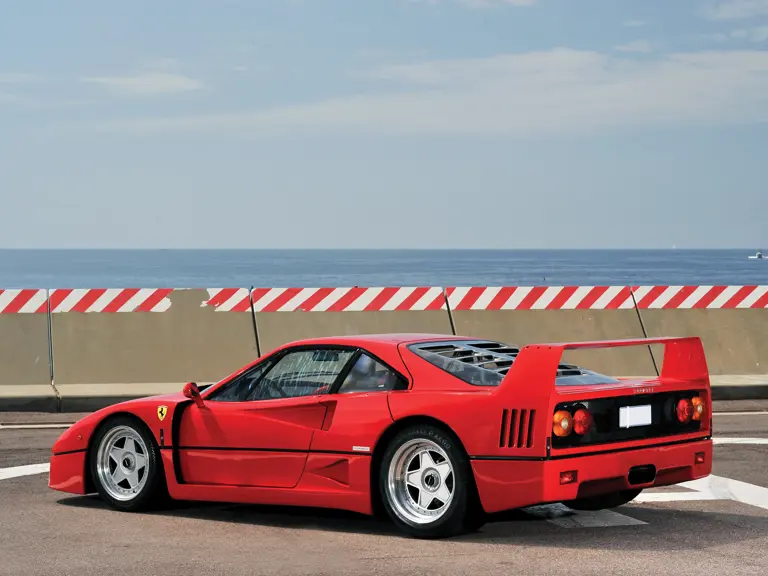
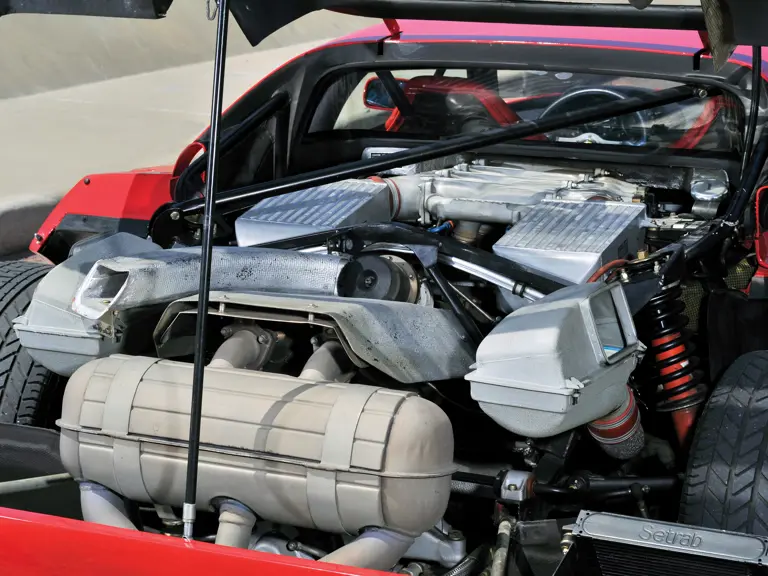

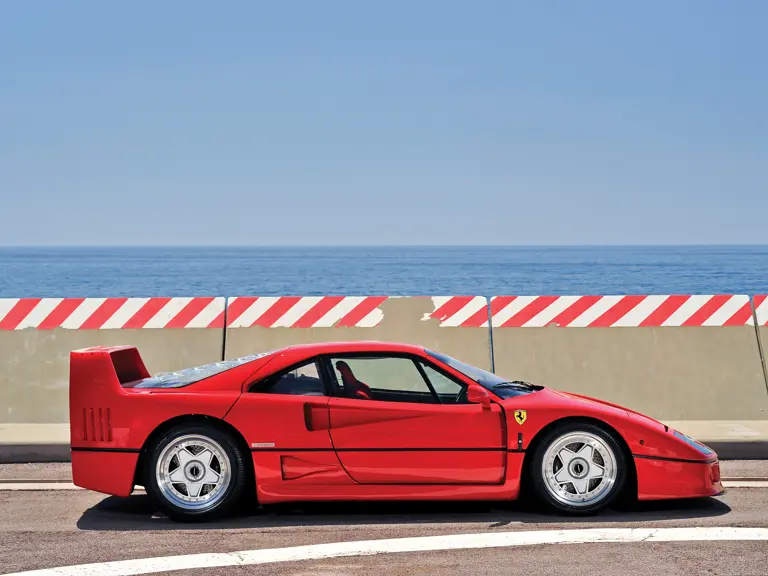
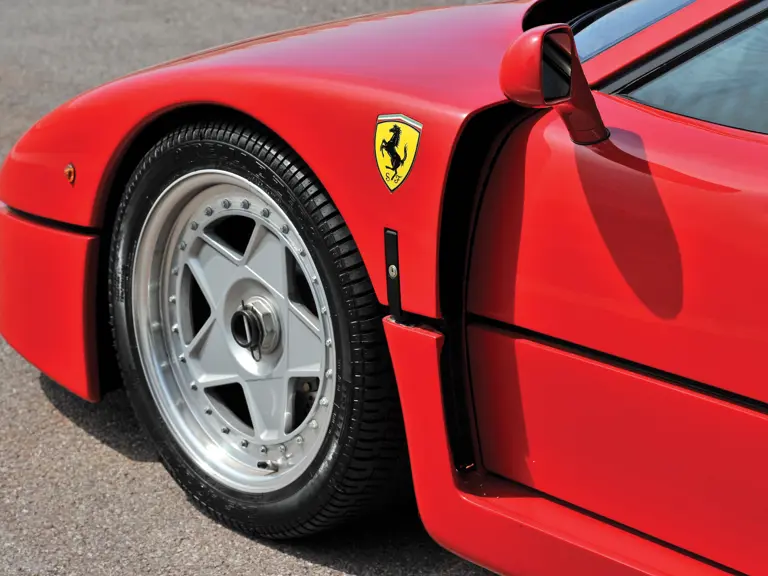
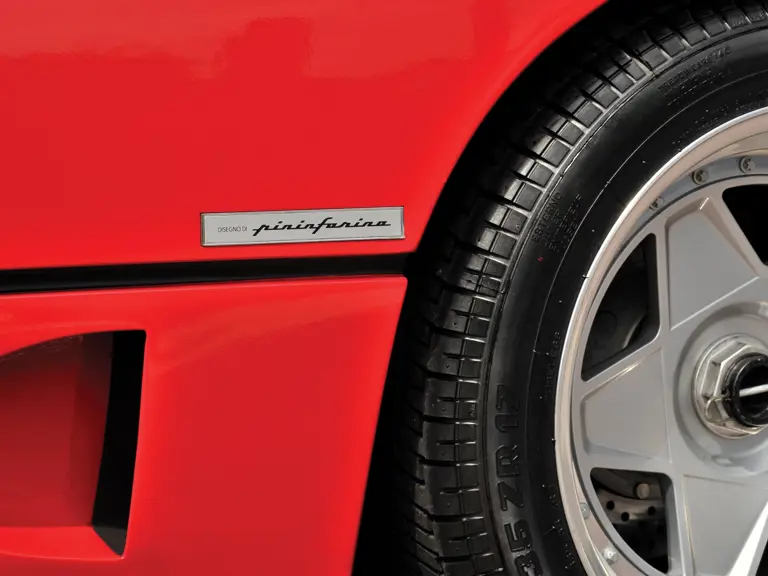
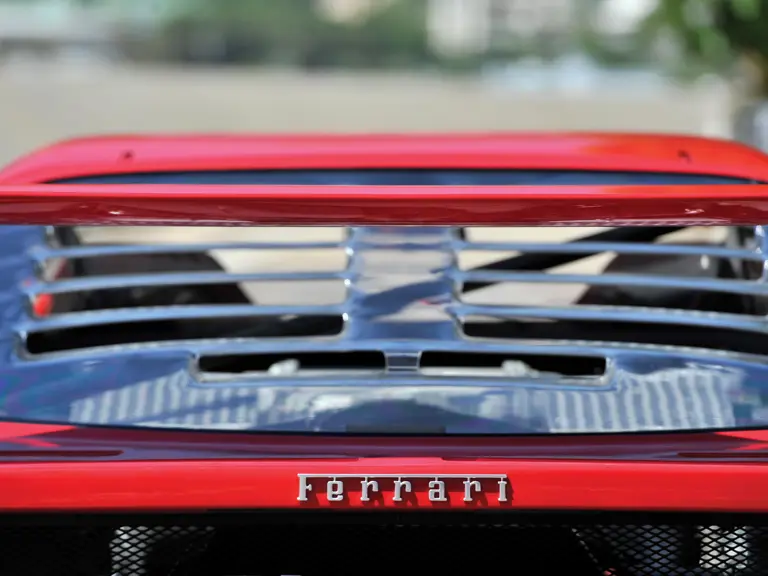



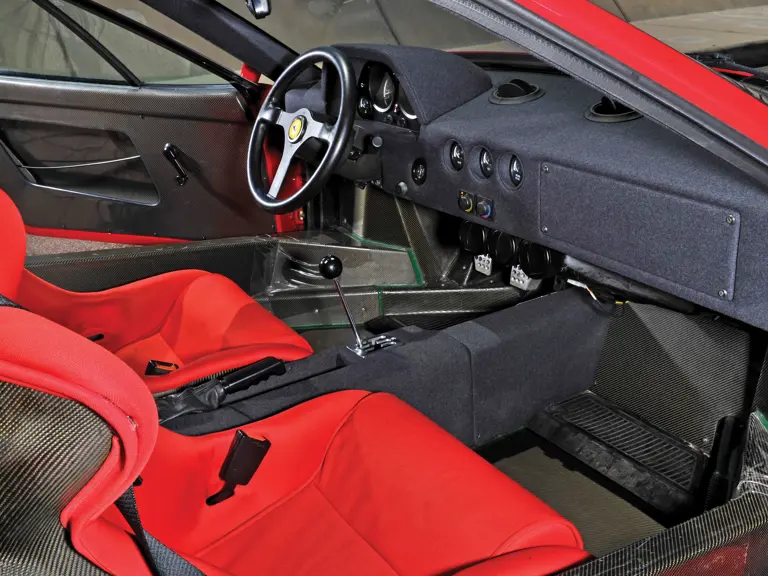
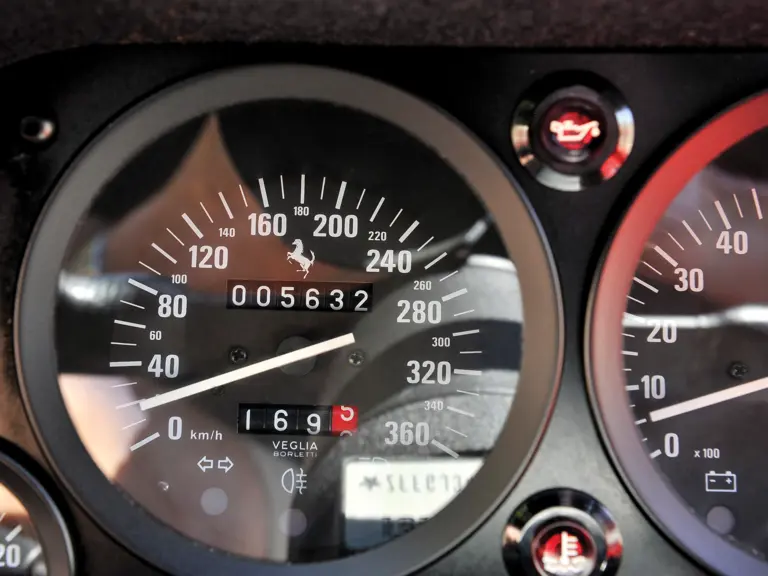

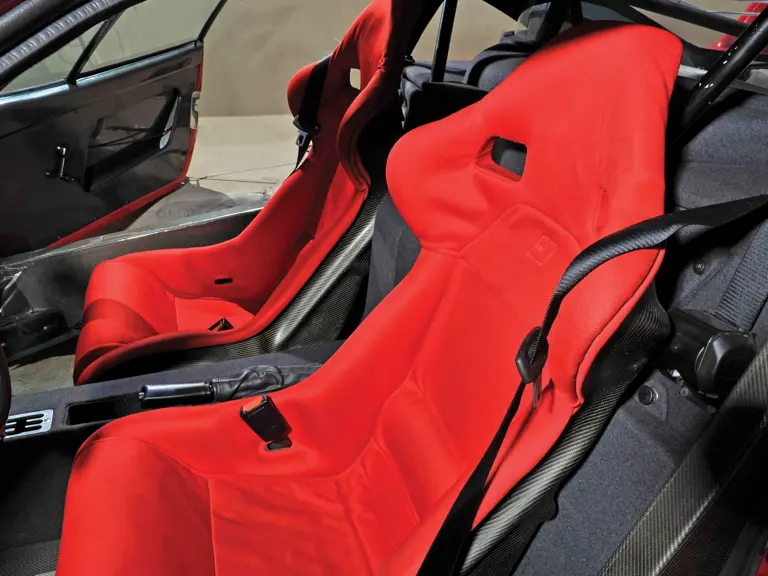
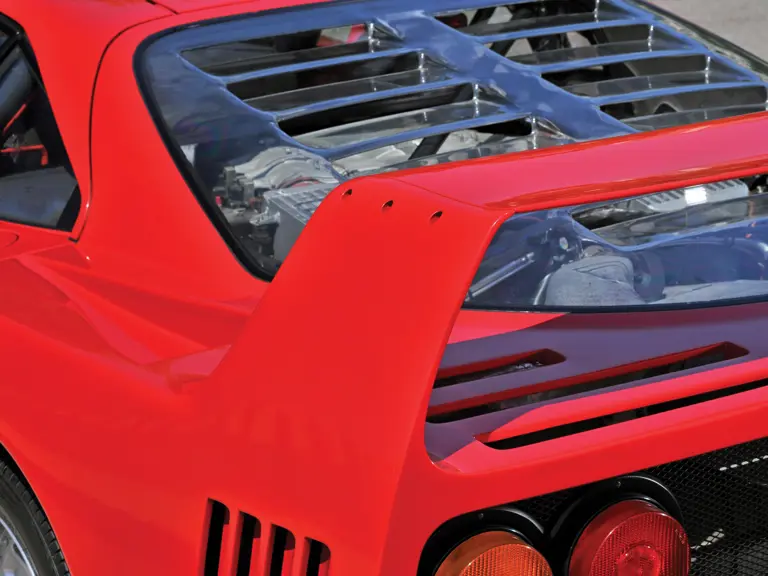

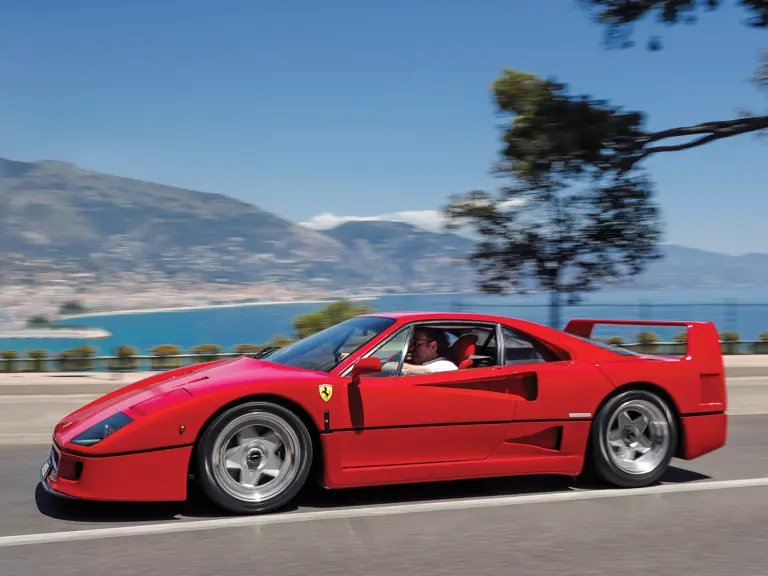

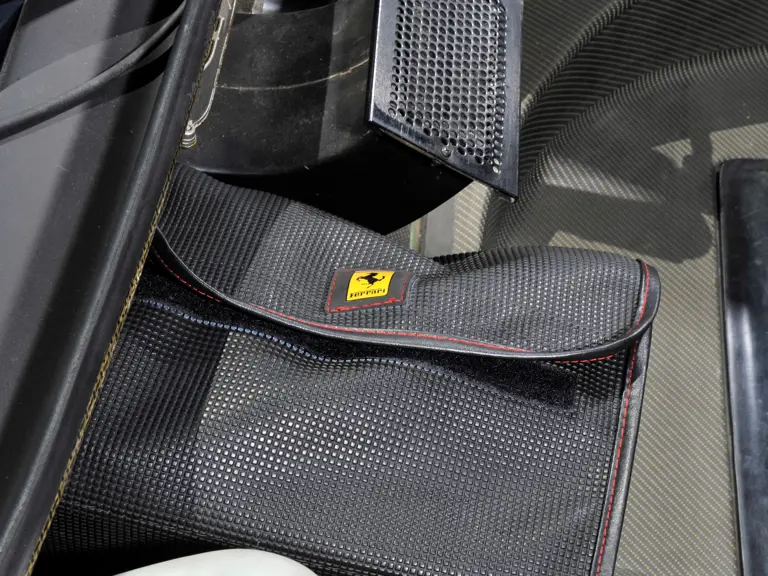
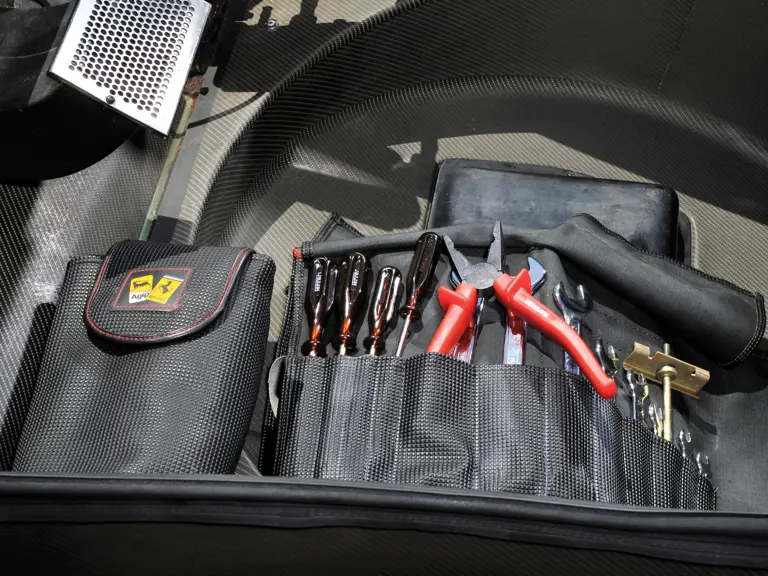
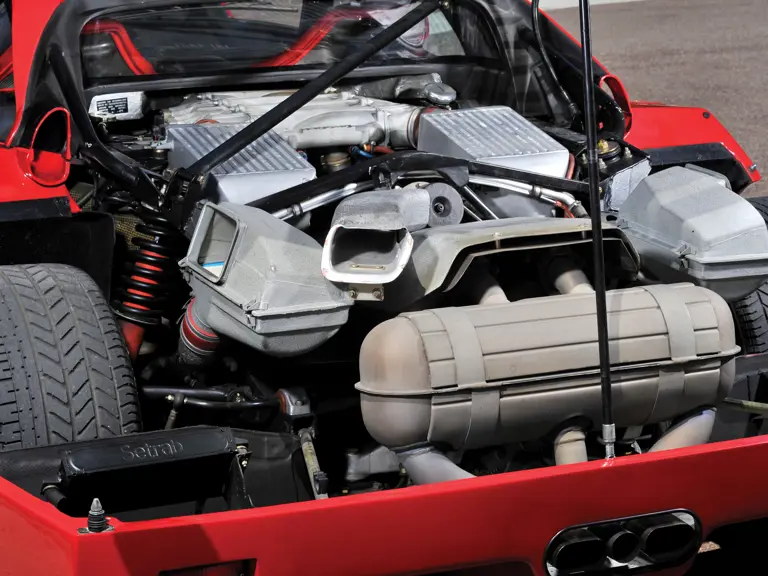


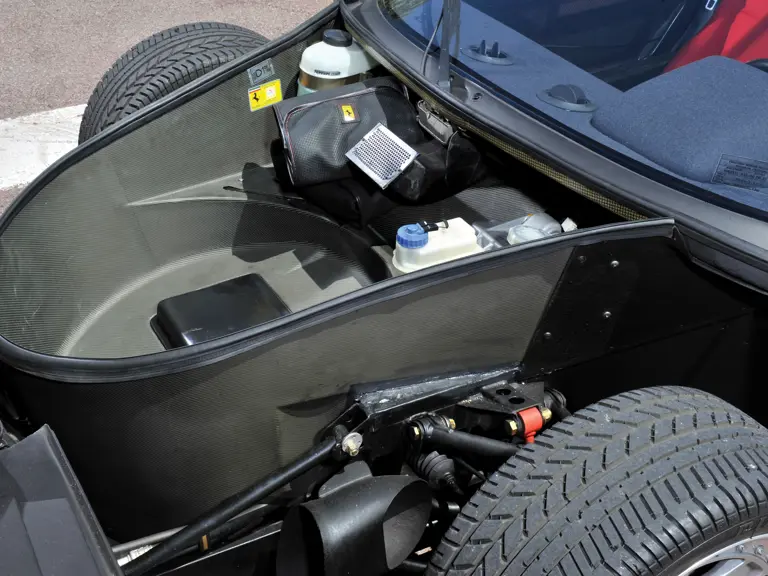

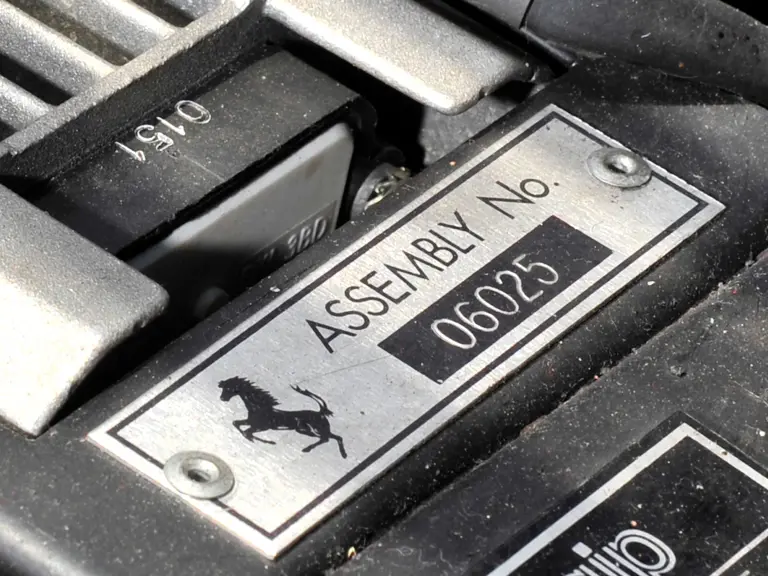
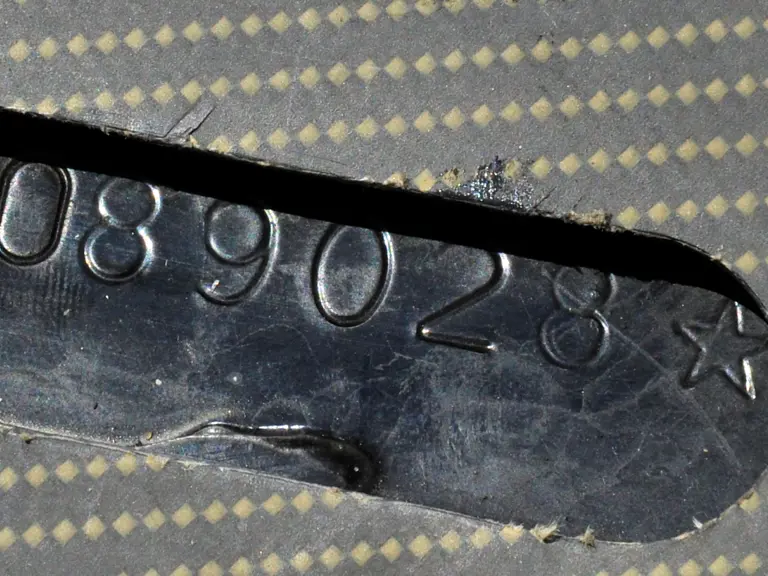

 | London, United Kingdom
| London, United Kingdom
